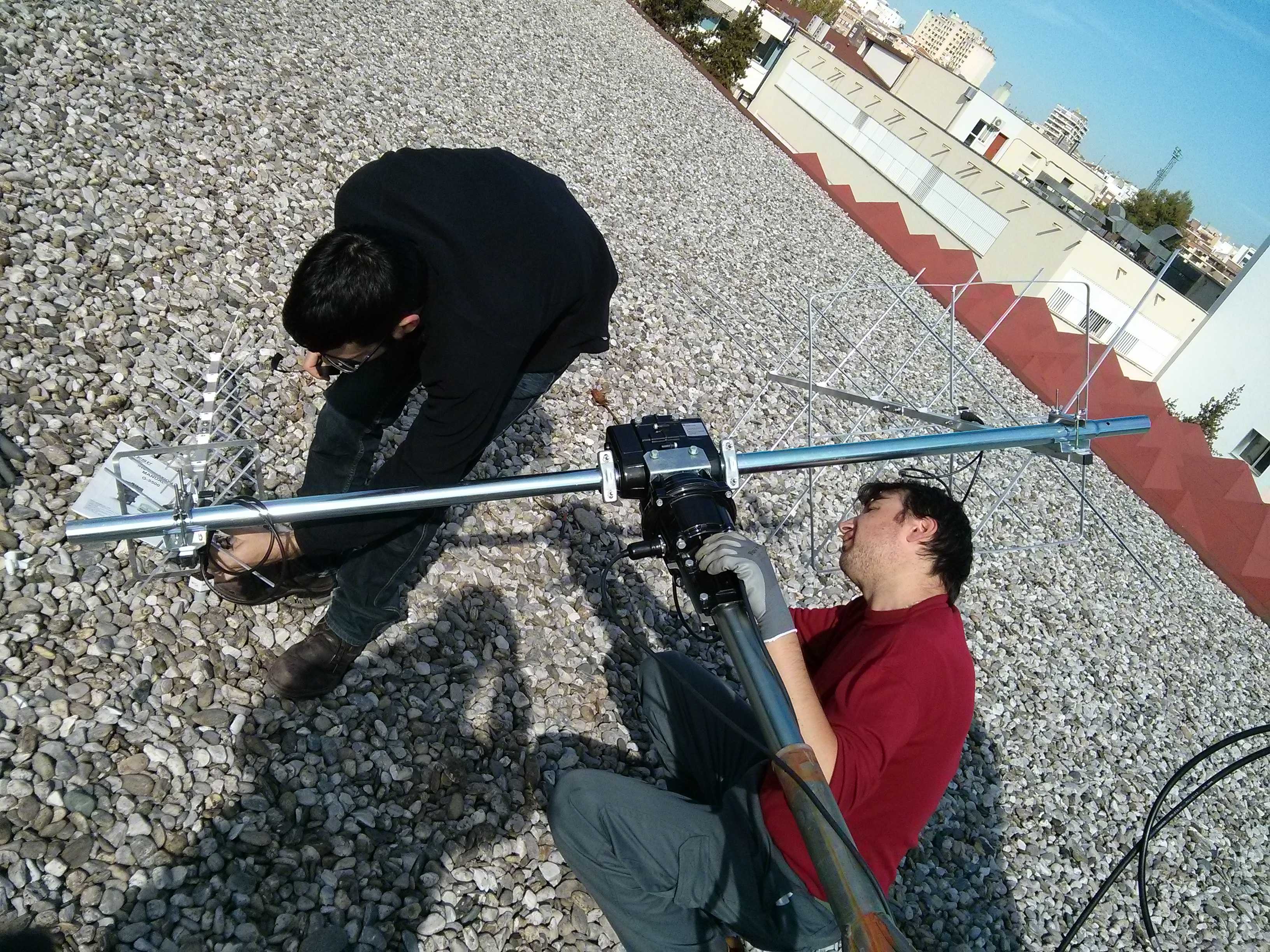The Ground Station of the GranaSAT-I is already installed on top of the Faculty of Science of the University of Granada and will be soon fully operational and ready to connect to the ISS.
Previous work includes the design and implementation of a RS-232 interface for rotor control carried out by Alejandro González, the antennas assembly by David Aguilera and the stretching of the signal and rotor control cables from the GranaSAT laboratory to the rooftop by the university technicians.
On Saturdays 16th and 23rd November 2013, the three antennas composing the Ground Station were installed by Prof. Andrés Roldán, contributor Jesús Ortiz and a group of students, including David Aguilera and Francisco López.
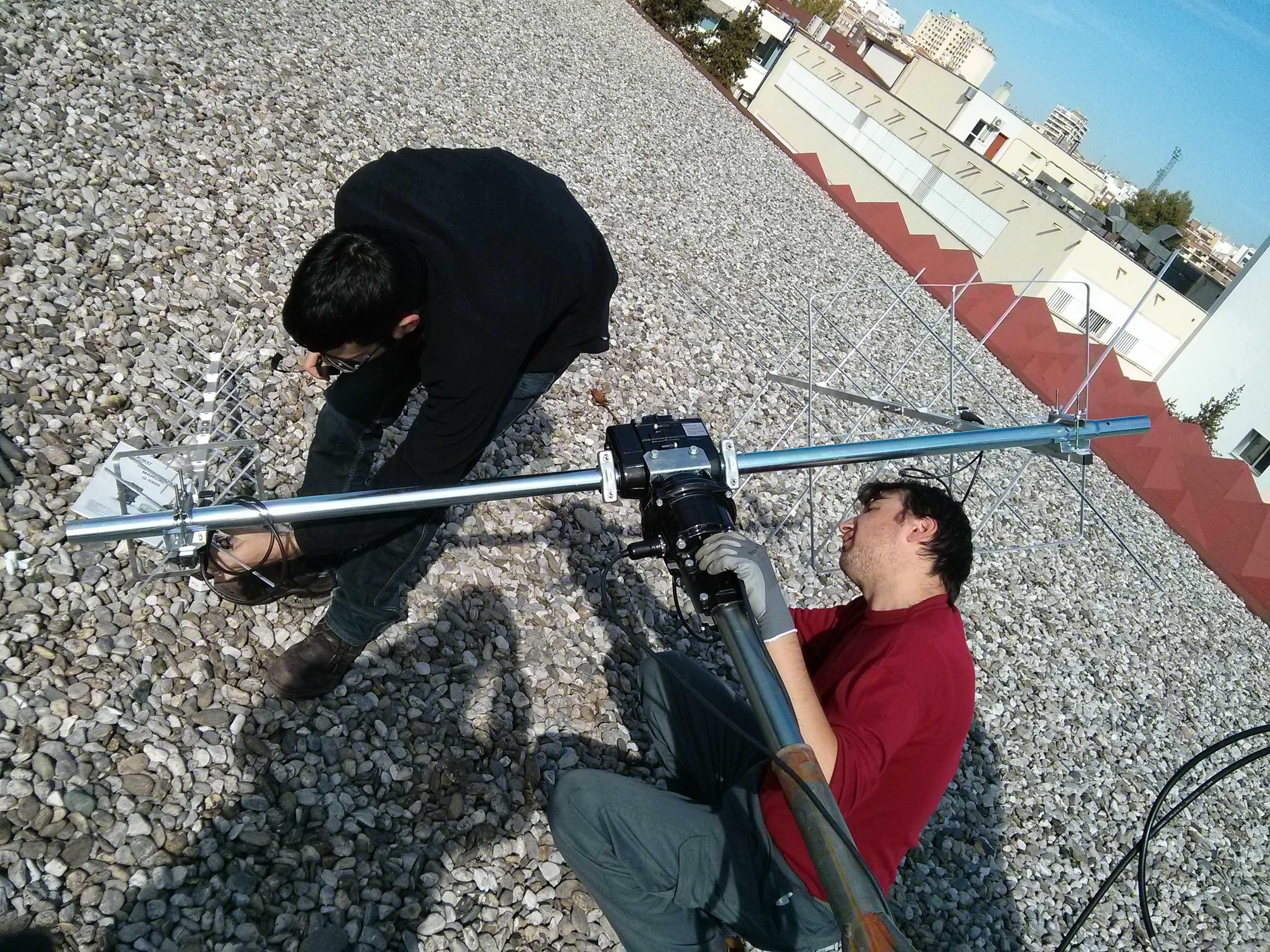
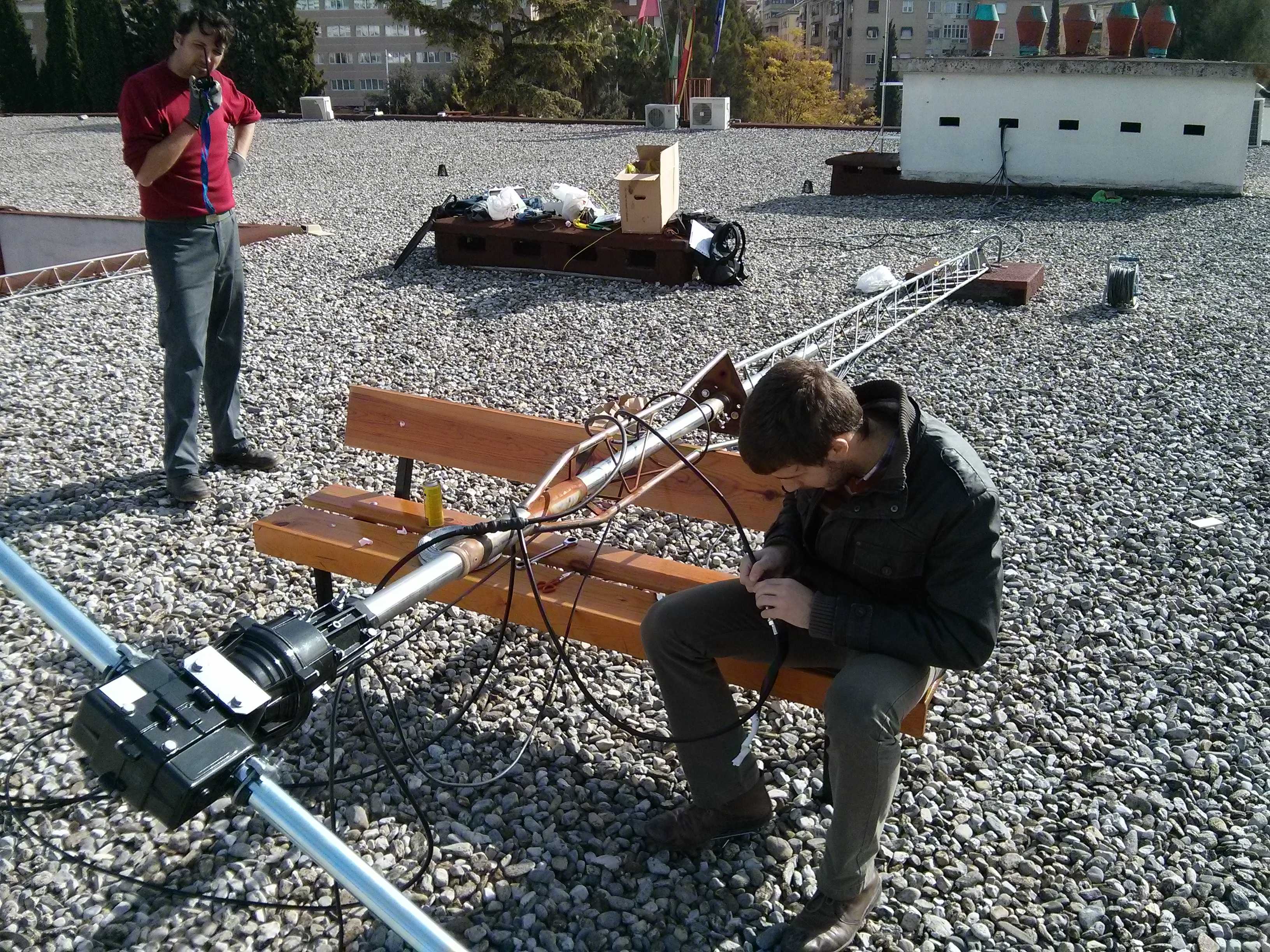
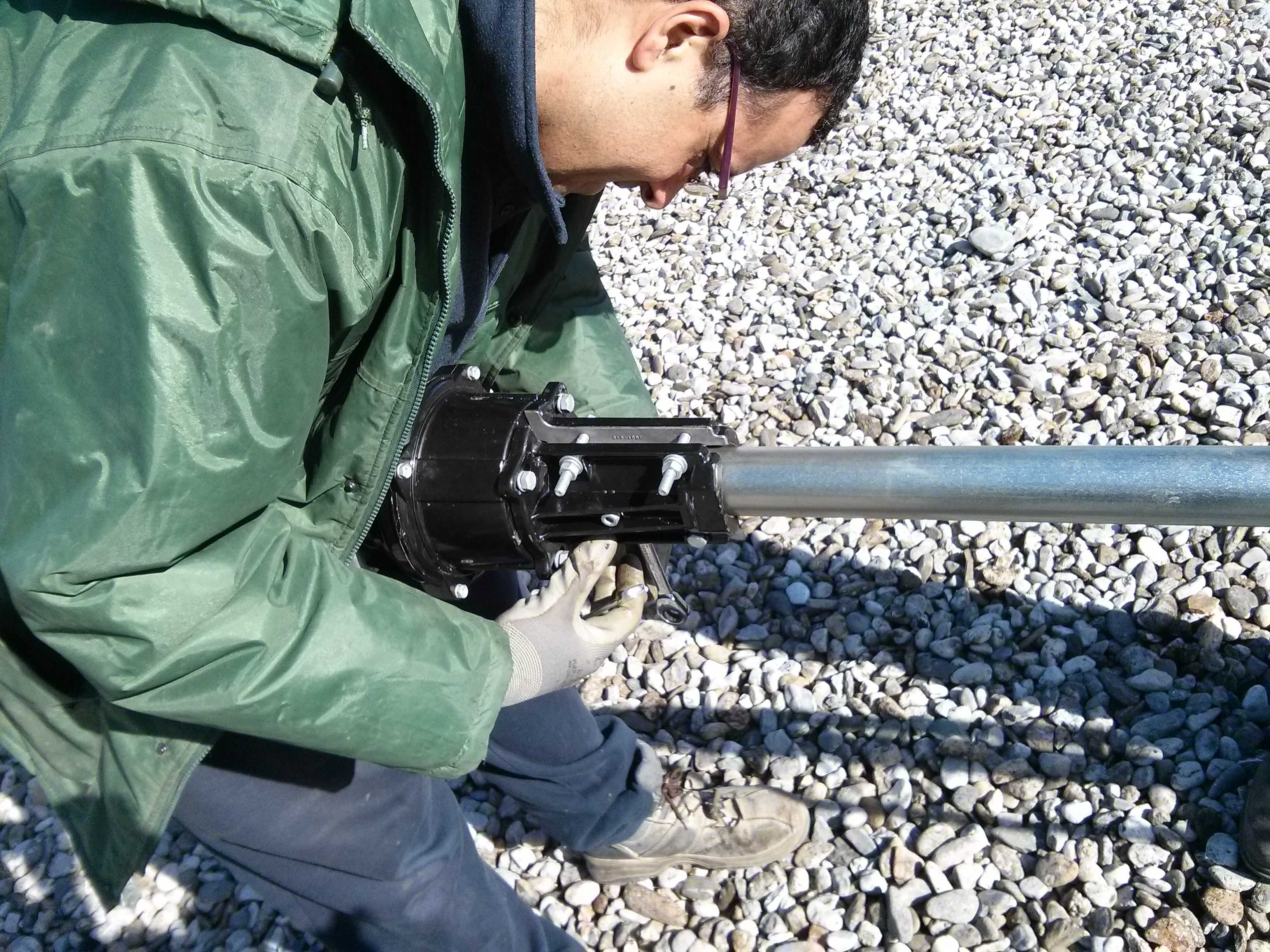
Due to its installation easyness, in comparisson with the others, the Diamond X-200N two-band vertical antenna (support antenna) was the first to placed. Its mast was fixed with 5mm screws to a concrete air house providing strong attachment.
The Wimo X-Quad 70cm and 2m antennas were mounted on a 6m mast, separated 3 meters from each other. As they have to aim to the ISS or satellite from which data will be received (or transmitted to), they are attached to the Yaessu-5500 rotor, which provides the antennas with a mobility range of 450º on the Azimuth and 180º on the Elevantion coordinates.
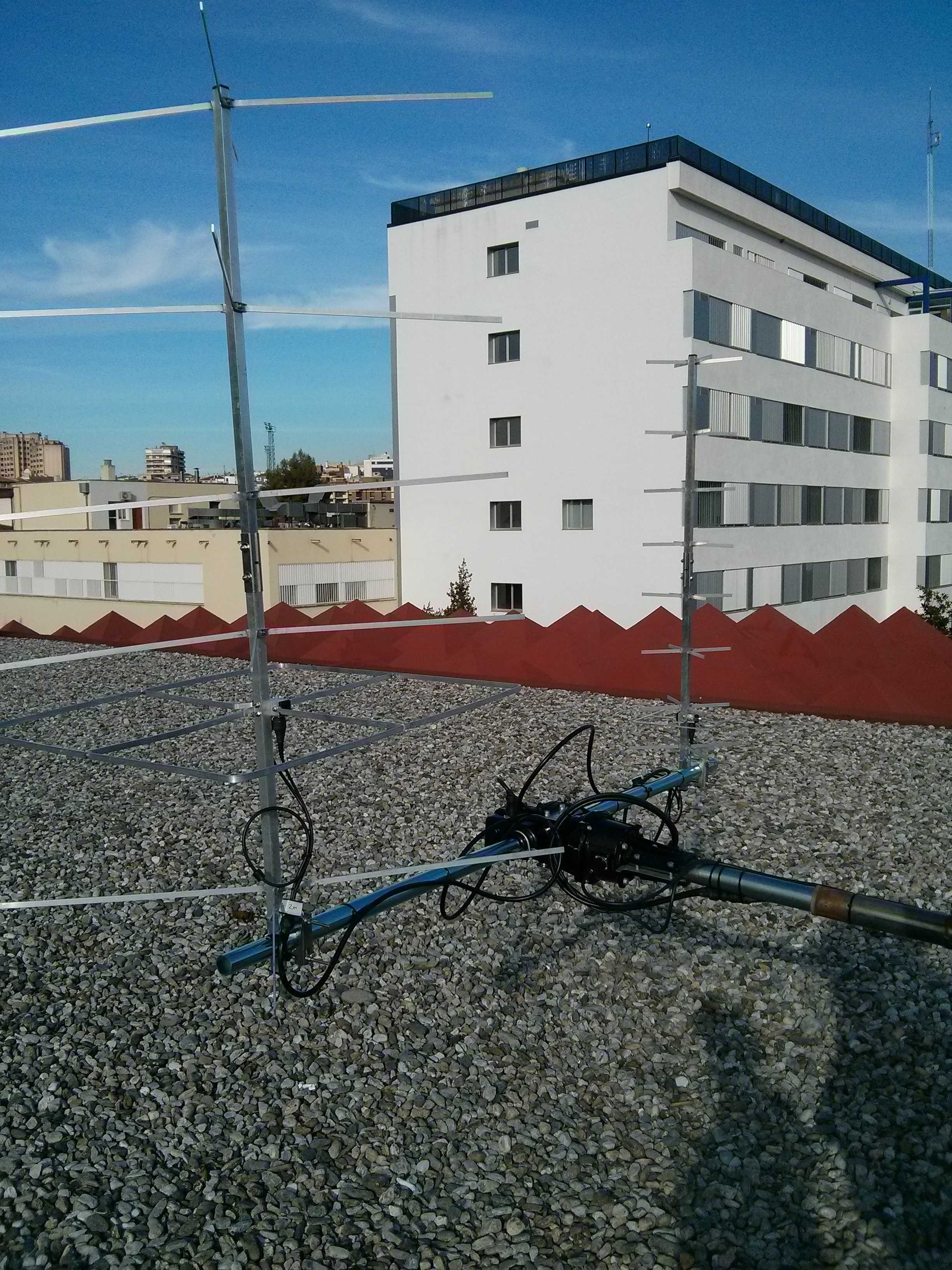
The mast is a triangled galvanized steel structure composed by 3m modules. In this case, only two modules were necessary to provide the antennas with enough elevation as to avoid significant vision obstruction with the surrounding elements of the environment.
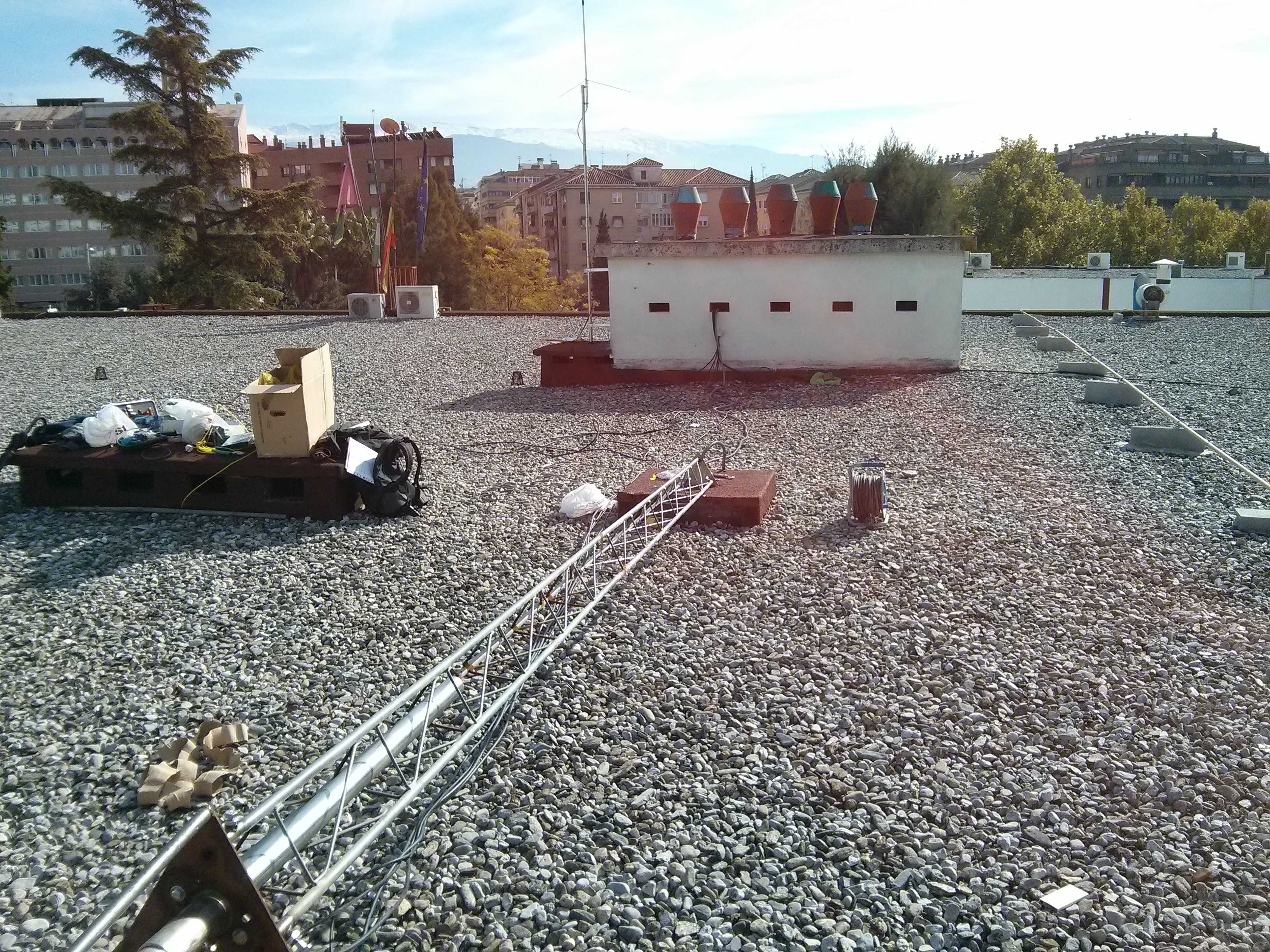
The mast was directly fixed in its bottom to the rooftop with three 5mm screws. However, due to the high exposure to bad weather conditions, including high speed wind, the structure was reinforced with other three 2mm steel cords attached to solid points on the rooftop.
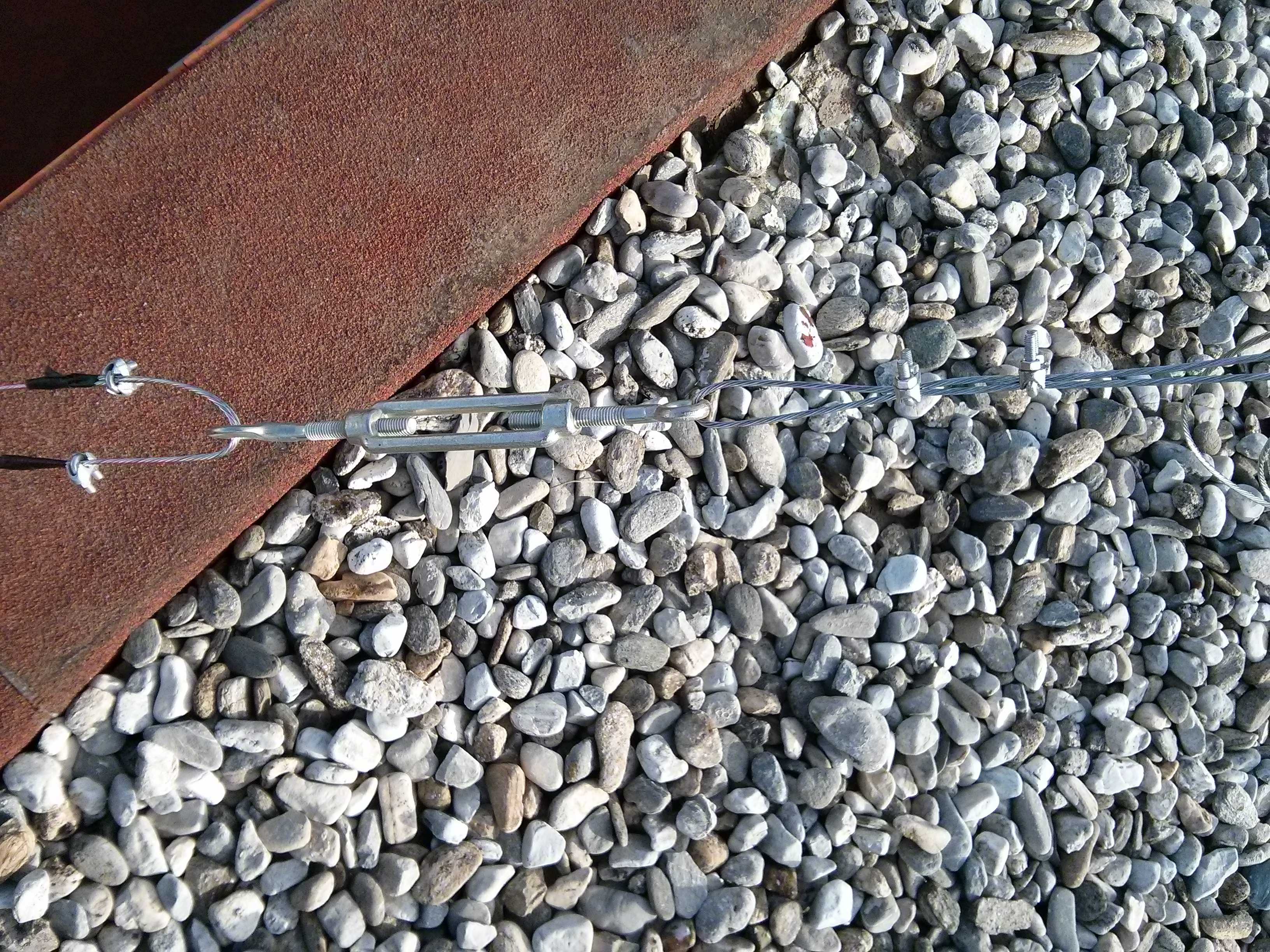
Connectors between cables and devices was one of the most time demanding tasks. In order to minimize noise and signal attenuation on the junctions, high precision attachment was required for the connectors, including water protection, or cremping for the RF-signal cables.
Finally, the result of the work carried out by the GranaSAT team can be seen in the following panoramic view,


